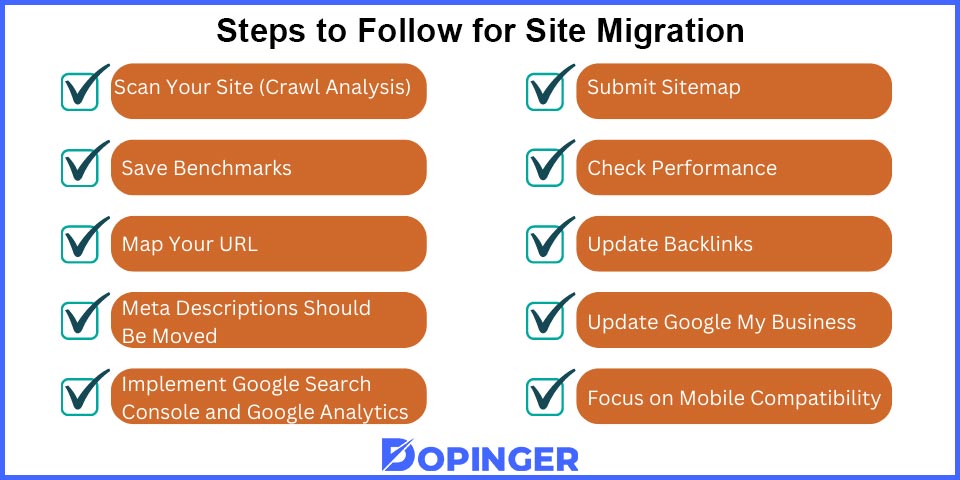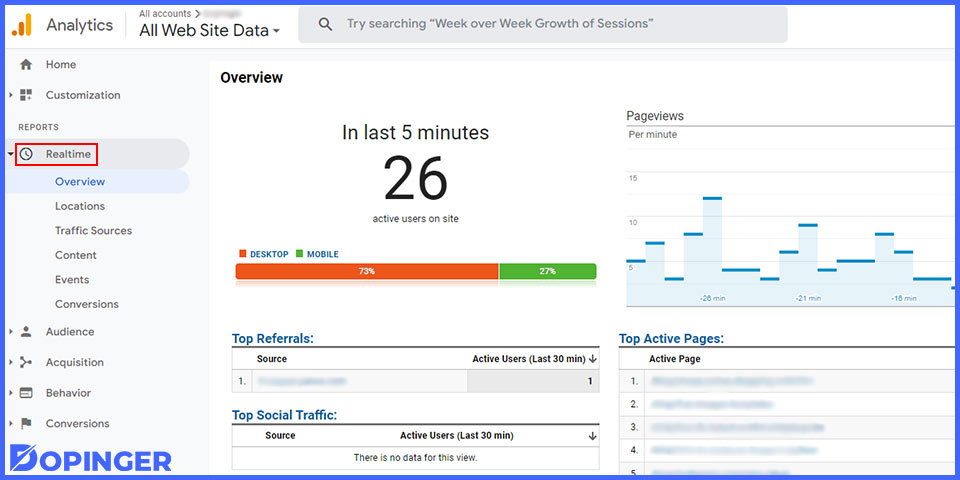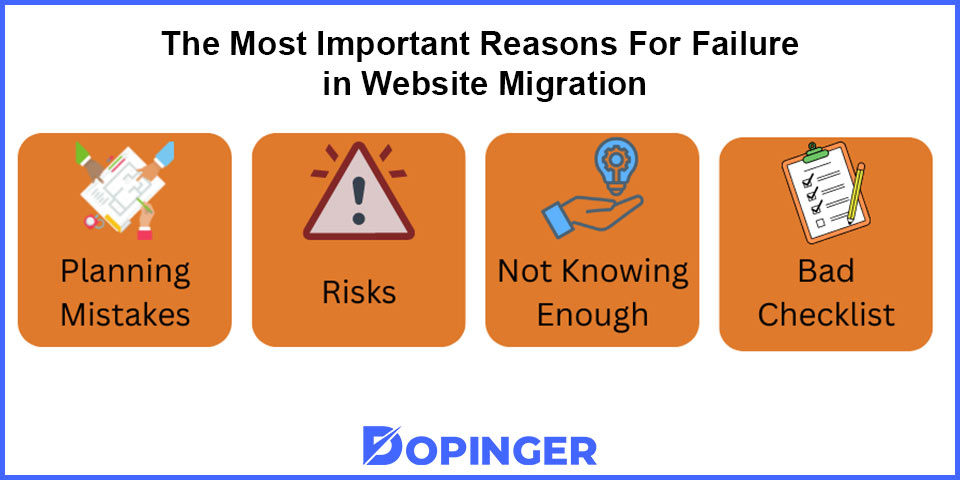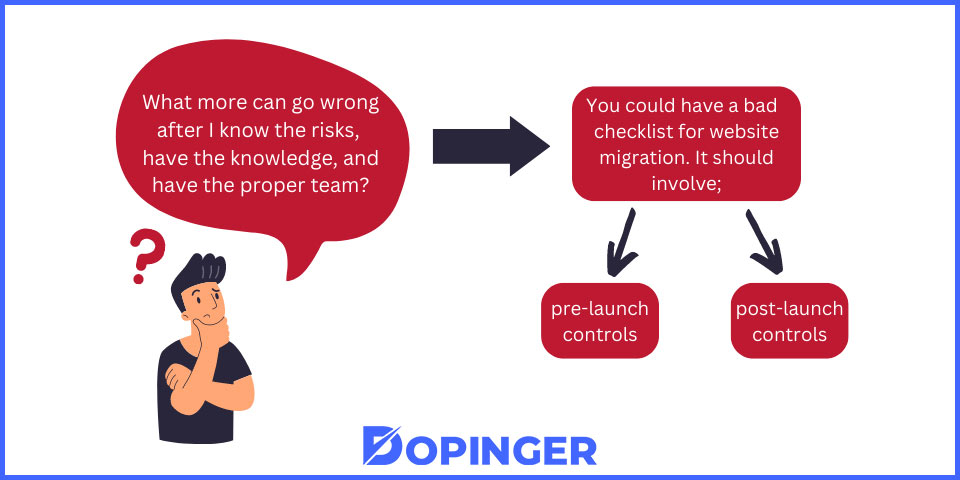Website migration, also called “SEO migration” is a set of strategies you need to follow not to lose traffic when deciding to make changes regarding your website’s SEO. There can be many reasons for choosing to change a website. You might want to change your URL, redesign your website content, merge websites, change your hosting, etc. However, when you change these things, search engines’ behavior toward your website will change, too.
They don’t know about these new changes, and they don’t know which metrics to apply. With a website migration project, you prevent losing your traffic and search ranking in the scenario where you decide to move your website.
Steps to Follow for Site Migration
In order for your website to be online 24/7, you need to get hosting service from a hosting company. You should also rent your website’s domain name from a provider on an annual basis. If a hosting company does not have the features you want or is straining your budget, you can move your website to a different company.
The process of moving a website is a challenging process that requires effort. While doing these steps, your website’s design, data and information should not be deleted. At the same time, your website must continue broadcasting uninterruptedly during this process.
To summarize, plan the website migration process well, implement it, and make constant checks throughout the process. When you find a company to move your website and make an agreement with this company, you can get support from your provider throughout the migration process. You can also get support from Dopinger to move your website smoothly. We have listed the steps for you to follow during the website migration process.

Scan Your Site (Crawl Analysis)
If you want to move your website’s domain to another provider, the first step you need to take is to scan the site because you need to scan the URLs on your website to move them to the new provider.
First, crawl the URLs, and all URLs should match. If there are problems with the URLs, there will be incorrect pages on your website after the migration. Moreover, some errors in your pages may have been working smoothly before.
You can gain information by analyzing content and links to reveal the new URL structure of your website.
You can perform crawl analysis on your website through your Google Search Console panel. In this way, you can detect whether there are any damaged pages and carry out the migration process without any problems.
Save Benchmarks
Data analytics can be deleted when moving your site. Since your past benchmarks will be valuable, you should keep them. Much data will be lost when you decide to move your site. Your previous benchmarks are valuable assets in this case. Take a look at your analytics and your most valuable content so that you can have ideas for the design and creation of your new site.
Map Your URL
Changing a URL means redirecting Google and your website users to the new URL from your old one. An intelligent way to do this would be to direct users to the replacement page. Let’s be honest: no one likes a 404 page error. By doing that, you can tell search engines and users that some new things are replacing your old carrier.
Losing all the authority and history your old site created is not desirable. Building a strategy that involves mapping your URLs would be beneficial for this. You should list URLs and map them to the current site.
Meta Descriptions Should Be Moved
The meta content and page titles are an essential part of SEO, and you need to ensure that your meta content of migrating pages is transferred to the new site. New pages can also be created while this transaction is taking place. Make sure they include the optimized titles and meta tags and are updated vital.
Implement Google Search Console and Google Analytics
With the help of Google Search Console, you can learn about indexes, ranks, and crawls Google provides for your website. That is why it’s an important step in moving a website. Moreover, Google Analytics and Google Tag Manager should be installed correctly, and you should make sure they collect data.

Real-Time Analysis report in Google Analytics will be a fast way to do this as it gives real-time information about what’s currently on your website.
Submit Sitemap
After moving your website, search engines need to identify your new pages. In order to do this, XML sitemap is the feature that search engines take into account. There should be no errors in the site map sent to search engines. You must create your sitemap correctly and send it to your Google Search Console account. Then, allow Google to use the sitemap from here, and your map will continue to be used without any problems.
Check Performance
After redirecting your website, you need to monitor its performance on the new platform. In this process, your website must work smoothly on the new platform. While doing this, you need to develop strategies to control your traffic and test the traffic situation.
Develop user engagement and retention strategies after migrating your website to a new platform. Also, take a look at your website’s ranking for the same keywords. By performing these checks, you can see whether your website is experiencing performance problems after the migration. If you experience a problem, you can identify possible solutions and develop strategies to strengthen your website.
Update Backlinks
You should have an idea about the pages that collect backlinks. You can visit Search Console or Moz Link Explorer to see which ones do that. After that, you can reach websites linking to your site and update the backlinks. Do not forget to keep track of the new backlinks, annotate Google Analytics, and control the outreach. You should plan effective backlink strategies for your new page.
Update Google My Business
If you are a brick-and-mortar business or target users in a specific region, your Google My Business profile should always be up to date. If you have a business account after moving your website, you must also update your Google My Business profile.
The link to your new website will be the detail you need to update on Google My Business. Google uses the data in this profile to verify your website. While executing your SEO strategy, your Google My Business profile information must be correct. If you want to update your My Business profile, you must take this step immediately after the migration. In this way, you can avoid the confusion and negativities caused by incorrect information.
Focus on Mobile Compatibility
Google checks your site’s mobile engagement and experience before indexing your website. A mobile-friendly website will help your website to be ranked the right way.
Google has a service that assesses and gives recommendations about your site’s mobile-friendliness. Using that service, you can create a responsive design.
The Reasons Why Website Migrations Fail
If you have tried to move your website, there is no guarantee that this process will be successful. Your website migration may fail due to various reasons. In this case, you must determine why your website migration failed.
For this, you can immediately contact your provider or the management of the new platform you will move to and find out the reason for the failure. At the same time, you can focus on possible reasons for failure yourself.
Immediately eliminate the situation that prevents your website from being moved and repeat the migration process. The less effort you spend on moving your website, the more you can devote your energy to other processes.
Possible reasons for not moving the website are as follows:
The Most Important Reasons
Have you decided to move your website and take action but couldn’t? During this process, website migration may fail due to various reasons. The most important reason why your website is not moved is SEO.
Do an SEO audit of your website and determine the problem. Some SEO issues may prevent your website from moving. In this case, you can move your website to a new domain by solving possible problems.
You can use many paid and free SEO tools to identify SEO problems and see solution suggestions. Thanks to the recommendations of these tools, you may be able to move your website without any problems.

Planning Mistakes
All the well-planned SEO migrations become successful in the end. You should plan as soon as you decide on migrating your website. And you need a lot of time to have a scope, a plan, and a team, and you should also have a budget and checklists to know clearly your goals and move accordingly. You need to be quick and early. If you don’t plan well, you will likely fail. If that is the case, you should meet with your team to decide on moving on or postponing the move.
Risks
You should be aware that moving a website has a lot of risks. Even though SEO is a powerful tool, it does not give you any guarantee. There is a high chance of things going wrong with a migration site SEO. You may not gain your previous rates. Make sure that your team knows these risks and then move forward. Clearly, show your team the advantages, disadvantages, and all the possible outcomes.
Not Knowing Enough
Making sure that your team has an understanding of the risks is helpful. However, you should make sure they are knowledgeable enough about the topic. This is the same for people working alone as well. Website migration services require intensive knowledge of SEO. They require knowledge about redirects, content change, URL environments, etc. You should know about the failures before you and analyze them carefully. Also, you need to know the risks, what to expect, and what is needed.
Bad Checklists
“What more can go wrong after I know the risks, have the knowledge, and have the proper team?” we hear you say. Well, you could have a bad checklist. You need to have vital and sufficient checks. Your list should involve pre-launch and post-launch controls.

What Should You Do to Not Fail?
- You should plan a detailed checklist in any migration process. You should especially have regular checks on plan redirections, content, and technical problems.
- Your content should be what you anticipated and fit well with your site. You should make sure that you have good titles and meta.
- You should check your URL mapping and if your redirects are going according to your plan.
- On the technical side, you need to ensure the migration’s technical aspects are set correctly.
Conclusion on Website Migration
If you want to move your website, there are various ways to do this. You may encounter various problems during the website migration process. If you have previously applied successful SEO to your website, moving your website with this SEO performance will not be easy.
If you want to move your website smoothly, you need to plan every detail. At the same time, you need to act professionally and work based on research in this process. If you make a mistake while moving your website, your SERP performance may be affected, and you may experience traffic losses.
We have told you all the details about the website migration process. You can contact us immediately if you have any problems while migrating your website. Now you know basically what you can do. You can move your website without any problems by following these steps. If you experience a problem, you can immediately get support from the Dopinger team.
Frequently Asked Questions About
Yes and no. Although it requires much effort, the rest will easily happen once you know the steps.
Planning is a crucial part of this process. You need to have a proper plan first and research a lot. Our guide will be helpful.
Although the price can vary according to your preferences, the standard rate is around $300.
Low visibility loss is the number one indicator of successful site migration.
It can vary from 30 minutes to hours according to how much data you move.





No comments to show.